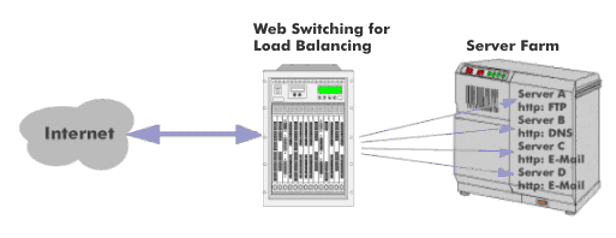load balancing
Load balancing is the load distribution of transmission links and hardware facilities. It is a switching in the application layers, which is realized by load balancers and mainly used in connection with web switches or in data centers. In this case, traffic is distributed to a server group via server load balancing( SLB) using multipathing. According to the specifications and prioritizations, it is determined which servers are assigned to handle the tasks.
In addition to maximizing throughput while minimizing server load, the load balancer makes user access to virtualized servers and applications more flexible. It also provides cross-site fault tolerance, easy configurability of server clusters and scalability of available resources, as well as improving server-to-server communication.
Web switches support different load balancing such as the static round-robin method, in which requests are distributed sequentially to the servers. In this method, the load balancing first starts a query to the first server of the server farm. If this is overloaded, then the query to the next server follows and so on. Another static load balancing method is Weighted Round Robin Queuing(WRR).
In the dynamic least-connection method, a connection is made to the server that serves the fewest connections. In the third method, the Weighted Distribution method, servers are weighted according to their performance; and in the Response Time method, another load-balancing method, the server with the shortest response time is selected.
In addition to the load balancing methods mentioned, there is also Adaptive Load Balancing( ALB) for port bundling and Elastic Load Balancing (ELB), an elastic method with improved adaptation of application traffic for Amazon Web Services( AWS).

